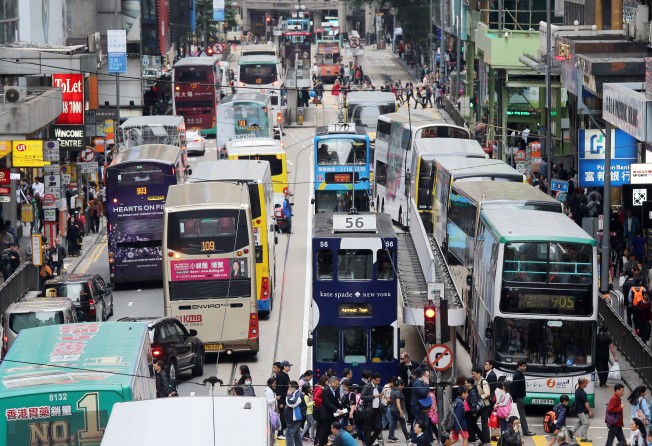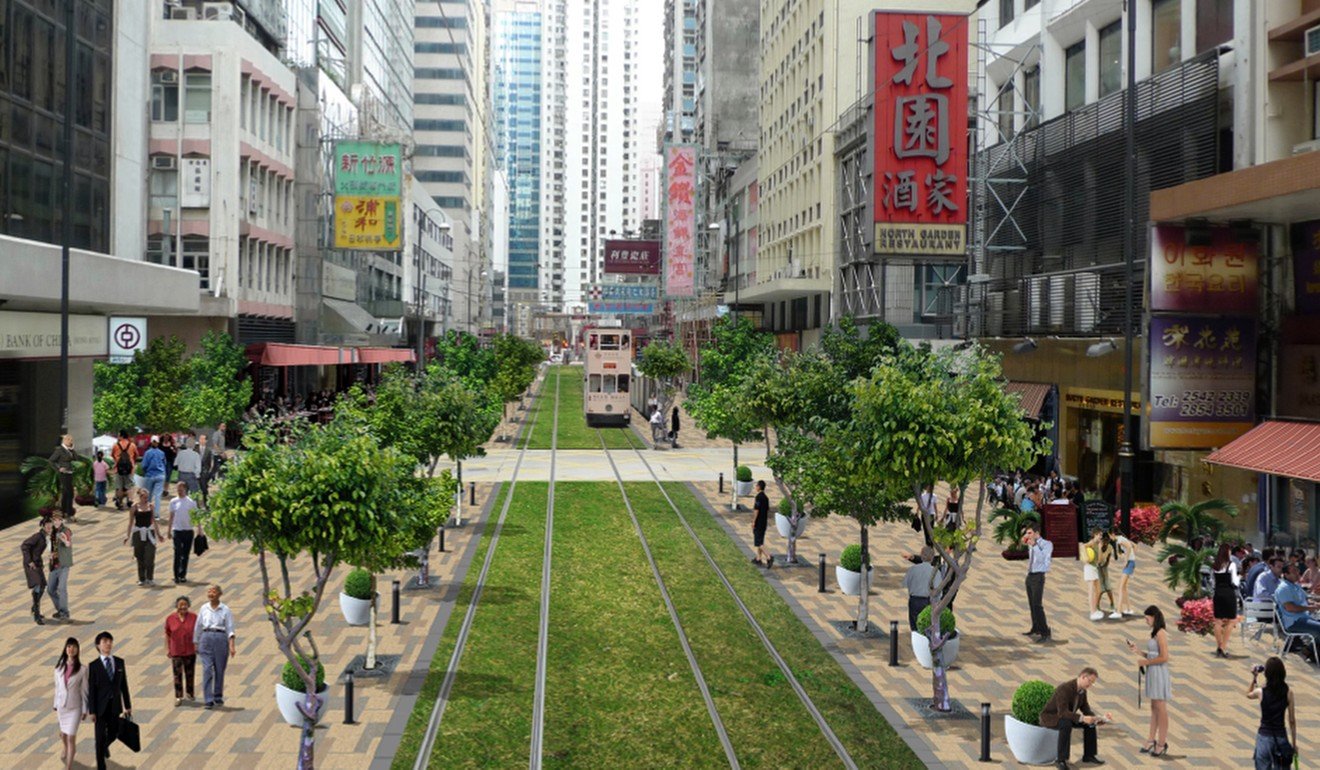
How Sheung Wan became the heart of Chinese entrepreneurship in Hong Kong
As plan mulled to turn Des Voeux Road into a pedestrian-only street, we look at the critical role historic district played in Hong Kong’s growth as a trading port

A pioneering urban planning scheme, Walk DVRC, is looking to pedestrianise Des Voeux Road in Central and Sheung Wan districts, easing traffic congestion and making local attractions more accessible to residents and tourists alike.
The area surrounding the stretch of the road in Sheung Wan is one of Hong Kong’s most distinctive neighbourhoods, with a long and colourful history. It is also arguably the heart of Chinese entrepreneurship in Hong Kong – for over a century, it was where Chinese merchants, financiers and fortune seekers made their first port of call.
The development of Sheung Wan really started in the 1840s after Hong Kong was handed over to the British by the defeated Qing dynasty, according to local historian Ko Tim-keung. Chinese vendors and street hawkers would line up their stalls on the neighbourhood waterfront, in what is now Queen’s Road.

“The historical development of Sheung Wan has long been overlooked by Western historians,” says Ko, who is also a former member of the Hong Kong government’s Antiquities Advisory Board.
“Without all the shops and institutes in Sheung Wan, Hong Kong would never have been like what we see now. All the activities and people there really made Hong Kong.”
The widespread civil unrest caused by the Taiping Rebellion in mainland China also led many Chinese merchants to move to Sheung Wan from the 1850s onwards, drawn by the flourishing Chinese community there.
“That was the first time in modern Hong Kong history that wealthy, influential Chinese with business experience settled here,” Ko says.
But the rise of Sheung Wan as a business district also coincided with the discovery of gold mines in San Francisco and later Sydney in Australia, Ko adds.
By the mid-19th century, Hong Kong shipping routes were serving additional destinations in Southeast Asia, China and Japan.
From the mid-19th century up until the second world war, Hong Kong was the most important entrepôt in the whole of China
Many thousands of gold-hungry Chinese subsequently used Hong Kong as a stepping stone to Australia and America. Sheung Wan effectively became their launch pad to future riches, while local financial services shops also enabled them to send money back to their hometowns in China.
“From the mid-19th century up until the second world war, Hong Kong was the most important entrepôt in the whole of China,” Ko says. “That was largely thanks to the economic activities in Sheung Wan.”
Look around Des Voeux Road today and you will find that local Hong Kong businesses are still thriving in the area, despite the influx of hip cafes, boutiques and other shops catering more towards expats.
Ko insists that despite the demolition of lots of old Chinese tenement buildings in the 1970s, the area still retains its local Chinese character.
For example, the family-owned Yat Fat Stationers at numbers 44-46 has been established for seven decades, catering towards office workers, students and budding artists alike with its extensive range of supplies.
Another iconic local business is the Tak Wing Pawn Shop at number 72, which has so far resisted being demolished, unlike other historic pawn shops in the city. Belonging to local “pawnbroker king” Ko Ho- neng, the property is instantly recognisable from its gold-hued colour.
The area surrounding Des Voeux Road is also home to a few businesses originally opened by immigrants from Shanghai, which by now have truly blended into the local Hong Kong landscape.

These include the Shanghai Book Store on Jubilee Street and the Shanghai Barber Shop found on Gilman’s Bazaar. The latter serves as a reminder of the popularity of Shanghainese barber shops in Hong Kong during the mid-20th century.Des Voeux Road was also a mecca for fabric dealers such as Nan Fung Place which stands at number 173. The original yarn spinning business was started up by an entrepreneur from Ningbo in Zhejiang province. It thrived during Hong Kong’s post-war manufacturing boom and eventually became a conglomerate. Nan Fung Group still owns the building, which is now a huge shopping and entertainment complex.
Two other major shopping destinations on Des Voeux Road which have impacted Hong Kong’s retail landscape are Sincere Department Store at number 189 and Wing On Department Store at numbers 209-211. The former was a pioneer of the modern, Western-style department store when it first launched in 1900, while the latter is still thriving and family owned.
It is hoped that a three-month trial to pedestrianise the western section of Des Voeux Road will be launched at the end of this year.